Airbus Helicopters has been awarded a contract by the NATO Support and Procurement Agency (NSPA) to lead a concept study for the Next Generation Rotorcraft Capability (NGRC) project, according to a press release.
The study, set to last 13 months, will focus on the design, development, and delivery of a medium multi-role helicopter.
Airbus will collaborate with RTX’s Collins Aerospace, Raytheon businesses, and MBDA to analyse two integrated concepts of next-generation military rotorcraft.
“Taking part in this NATO study for the next generation of military rotorcraft offers a unique opportunity to leverage our experience working with the different European armed forces,” said Bruno Even, CEO of Airbus Helicopters.
He discussed the goal of developing a European solution that meets the needs of NATO armed forces while ensuring industrial sovereignty and maintaining key engineering competencies. “This project will be fully interoperable with other NATO means,” he added.
NSPA General Manager Stacy A. Cummings highlighted the significance of this initiative. “The launch of Concept Study #5 is a significant milestone for the NGRC concept stage activities,” she said. Cummings noted that the strategy of launching three parallel contracts awarded by competition aims to maximise industry expertise and provide a broad range of potential concepts for multinational customers.
The project involves participation from France, Germany, the United Kingdom, the United States, Ireland, and Italy, with each country contributing through partner companies in areas such as helicopter design, systems integration, connectivity, weapons, avionics, and sensors.
The study will emphasise modular and multi-mission rotorcraft with high performance, NATO interoperability, and resilient communication systems.
The NSPA, headquartered in Luxembourg with operational centres in France, Hungary, and Italy, is NATO’s primary organisation for multinational acquisition, support, and sustainment across all domains. The agency employs over 1,500 staff and manages more than 500 contractors worldwide.



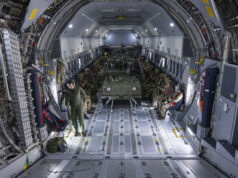
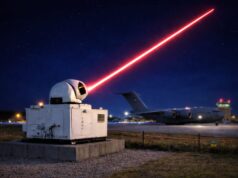

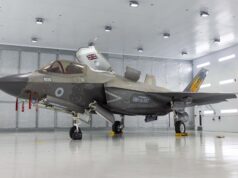
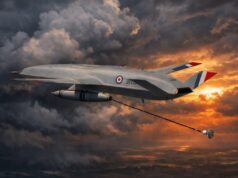

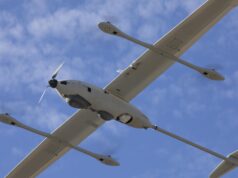


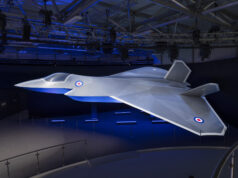

This news piece is inaccurate. As Leonardo and Sikorsky along with Airbus have been chosen by NATO to develop Next Generation Rotorcraft Capability (NGRC) concepts. Not just Airbus alone, as the piece alludes to.
The NGRC program seeks an optionally crewed aircraft capable of carrying 12 to 16 heavily-equipped troops, with a range of over 900 nautical miles (1,670 kilometers) in “combat configuration,” and a speed of at least 180 knots/330 kilometers per hour (and possibly over 220 knots/400 km/h).
This is a significantly lower specification requirement than the US Army’s Future Vertical Lift – medium (FVL-M). If anything this more suited to the Boeing-Sikorsky Defiant co-axial helicopter.
The image above is an Airbus design, that uses some of X3 prototype methodology. At the rear on the horizontal stabilizer are two propellers. These are designed to provide thrust once over say 50kts. Which means some of the drive to the main rotor can be reduced and the rotor disc made more level. By slowing the rotor rpm down you lose lift. However as lift is proportional to airspeed. The thrust provided by the propellers helps push more air over the main rotors, for them to generate the lost lift. But as the rotor rpm is lower, the tip speed will be lower and therefore stay out of the transonic/supersonic zone, ie loss of lift/high drag penalty, resonance etc.
However unlike the Defiant, which uses the same method. The Airbus design is only a single rotor and not a coaxial one. Therefore, as the airspeed increases. The advancing blade will generate much more lift than the retreating blade. Causing the advancing blade to want to lift and roll the aircraft. This is compensated for by the flight controls tilting the swash plate down on the advancing blade, ie reducing the roll moment. But there is only so much travel the swash plate can do before it hits the mechanical stops and the aircraft then runs out of roll authority. Which means the aircraft cannot fly any faster!
The Defiant with its coaxial rotor heads, does not have this problem. As both opposing advancing blades cancel this issue out. The Defiant’s problem and why it’s much slower than Bell’s Valor, is that you can only remove so much power to the rotor heads. Once you reduce it to 65-70%, any lower and the aircraft losses too much lift. You need a fixed wing to generate the lost lift.
Unsurprisingly Sikorsky are developing a variation of the Defiant for their concept proposal. However, Leonardo are basing theirs on a tilt-rotor with support from Bell. Hmm, sounds familiar. Wonder if the Defiant version will now come with a wing?
Yes I now understand, I think, thanks for all the info.
Yes. i was coming writing that. I would expect that UKDJ would not just post PR:
Very interesting post 🍺
While reading your post and the insightful explanation, I was thinking about a wing to compensate. Wonder what the pros/cons are and why they didn’t introduce such a concept in some form in Defiant. In some ways I rather like its concept. Wonder how it compares to the Airbus Racer concept where wings do indeed contribute somewhat which suggests a winged Defiant is possible, just the balance of pro/cons I guess.
.
Hi Spy, I think I can answer the question. Though I don’t work for Boeing or Sikorsky, so a lot will be based on assumptions and experience.
The Defiant was built on the knowledge gained from the Advance Blade Concept aircraft S-69, X2 and Raider. The S-69, X2 and Raider test aircraft use a coaxial rotor head design, but the S-69 also incorporated a pair of small turbojets mounted either side of the fuselage. This was later changed that incorporated a small wing with the turbojets mounted to it. The Rotor-blades were rigidly fitted to the rotor head. So they did not have the ability to flap or lag, like a fully articulated head design. The rotor blades were a carbon composite, which also helped with rigidity.
From what I can tell the S-69 basically used brute force to fly fast. Where the additional turbojets helped it reach a higher top speed. Whereas the X2/Raider tested two concepts. The first is unloading the trailing blade to stop it stalling. This is done by setting the blade’s angle of attack to around zero degrees, when the blade is retreating. The second concept was blade slowing. The X-2/Raider used a pusher propeller to provide thrust above a set speed. The rotor hub swash plate was then unloaded, where its forward pitch angle was flattened. Secondly the drive to the coaxial rotors was slowed down. Which normally reduces lift and the aircraft will sink. However, this is countered by the thrust from the rear mounted propeller. The forward speed created by the propeller causes the rotor blades to generate more lift and make up what has been lost by slowing them down.
This is the method that the Defiant uses. Sikorsky were adamant that they didn’t need a wing to make up for the lost lift. Plus without the wing, it produces a slippier and less draggy aircraft. However, they cannot beat physics.
The Defiant like the X2/Raider suffers from excessive vibration when above cruising speed. This is caused by the necessary use of the rigid rotor blades. They need the blades to cope with the transonic resonance, which cause the blades to warp and oscillate up and down. Mounting the main rotor gearbox on active dampers will reduce the vibrations transferred to the cabin, but it won’t remove it. Additionally they could give the aircraft better top speed and reduce the vibrations, by slowing the blades down further or preferably removing all drive to the rotor blades From what I’ve read, they only slow the drive down to around 90%. By unloading the rotor blades you remove the vibration issues and can increase the aircraft’s speed to near the local airspeed. But you must use a wing, to generate the lost lift.
The Airbus X3/Racer, does a similar thing. Where it slows the main rotor rpm down to around 75%. However, they also use a small box wing, to boost the lift. They do not remove all the drive. So the aircraft will still have the top speed wall created by the swash plate losing roll authority.
In some respects you could make the Defiant go much faster. If it was fitted with a wing that generated at least 50% of the lift when the drive to the main rotors is removed. Plus being coaxial, it won’t have the roll issues, as the coaxial advancing blades will balance each other out. So why did Sikorsky not fit a wing for the future vertical lift – medium requirement? The only thing I can up with, is how the wing placement could interfere with the debussing and enplaning of pax. For a straight tapered wing, it would need to be placed vertically in line with the main rotor drive shaft. If its low on the fuselage, then pax access would be limited to a forward arc. If it was placed high on the fuselage. Then there may be airflow issues between the rotors downwash and the wing. Which may compromise some of the hovering capability. Without the aero data I wouldn’t like to state either way.
But with a wing, the Defiant could be made to go quite a bit faster. Hold more fuel for extending the range. Generate less drag at its cruising speed, as the rotors would be off-loaded and being spun by the localish airspeed. But also give the crew and passengers a much smoother ride. Then when in the slow speed helicopter mode, have superior manoeuvrability due to the coaxial design.
whoe5 gets it I hope they can build them fast.
Come on Andy…Fast?🙂
So, remind me, what was wrong with the Fairy Rotodyne?
Noise was the biggest issue, and to be honest the concept was probably ahead of the available tech. But as I have said before someone should re look at it, the basic engineering is far simpler and efficient than a tilt rotor. We have far more advanced materials, FBW, lighter and more powerful Turboprops and way more understanding of diverting gas flows and noise control.
Simple is frowned when there are billions to develop lots of associated technologies for other projects.
How many signatures can we get on a letter to Leonardo telling them to restart development?
George, please, please set this up, it would be for the good of the world.
There is another option. The Rotordyne initially designed and built by Fairey. Who were then merged with Westlands by the Government in 1960. Who themselves are now part of Leonardo.
Pretty sure Fairey would have patented the Rotordyne concept, so its ownership would have transferred to Westlands etc. But what is the life of a patent and was it renewed. If it has lapsed, then anyone can use the concept without license. Do they still have IP rights after all this time?
So instead of getting Leonardo to relook at the concept, who currently are more focused on tilt-rotors. Is to set up a separate design house. Who develop a family of aircraft built around the Rotordyne concept. Ranging from a two manned attack aircraft to replace the Apache, a medium role aircraft to compete against the Valor, plus a large aircraft to compete against the Chinook and King Stallion.
The Rotordyne concept could be a comparable performing aircraft to the Valor for all three concept types, in both speed and range. But will significantly outperform the Apache or even the Invictus future scout aircraft. The biggest gain will be the heavy lift concept. As it could easily be designed with same lift capability as the King Stallion, but with the performance of the Osprey.
The next stage would be to sub-contract Leonardo Yeovil to build it. Ignoring what Russia are producing for the heavy lift market. There is only the King Stallion and Chinook who are dominating the market. Currently there are no other competing designs. A heavy lift aircraft using the Rotordyne concept would seriously upset Boeing and Sikorsky.
Simples!
I may have replied to your previous post on the matter (I did someone’s) but I know I read earlier in the year some company was indeed rehashing the concept but I just can’t remember anything else about it, it was probably on New Atlas. Wasn’t the noise problem that it used rotor tip jets?
Hi Spy, yes we did have an earlier conversation. The tip jets can be likened to giant Bunsen burners, though internally similar to a ram jet. Pressurised air is either taken from an engine bleed, or dedicated high pressure air pumps. This along with fuel is fed up through the rotor head, along tubes in the blades then to the tip jets where its burnt. The noise generated was slightly less noisy than a turbojet, but still loud – I recall possibly 117dBs (but will need to check). Fairey/Westlands just before the Government pulled the plug, had tested a new tip jet design that was significantly quieter. Westlands also had the Westminster medium/heavy lift aircraft in development, so didn’t push to further test the Rotordyne.
I did see quite a few years a ago, a company showing a model of a regional airliner base on the Rotordyne concept. But it didn’t go any further. There is also a US company developing a faster winged autogyro. But it only has a electric main rotor “helper” which spins up the blades on the ground to help shorten the take-off run. I’ve not seen anything else sadly!
Not much at all. And they had ideas in hand for reducing noise. We should re-look at it. Seriously.
I think you are right, noise is not quite the problem as compared to civilian use anyway esp when limited to only one part of the flight regime, but such a concept with modern control advances would surely offer short take off and landing possibilities too over its rivals.